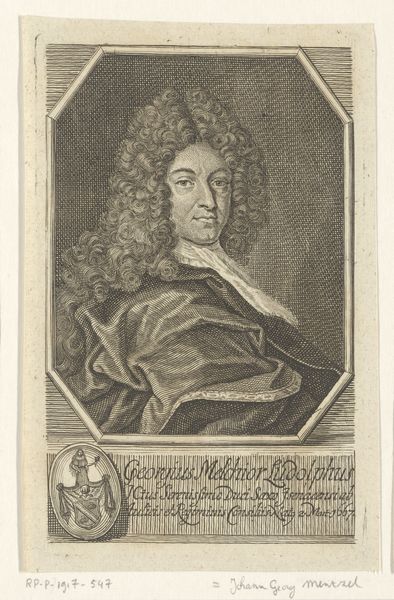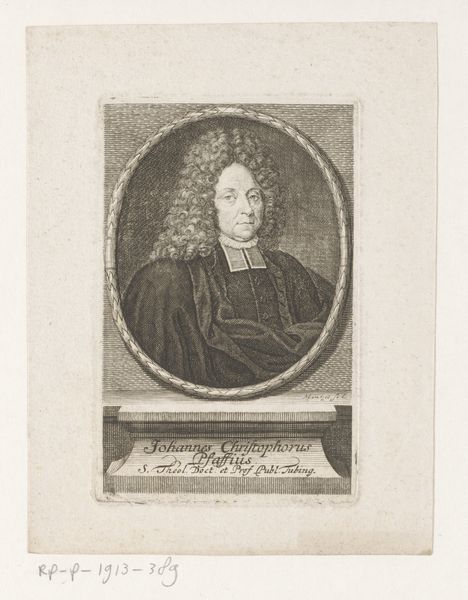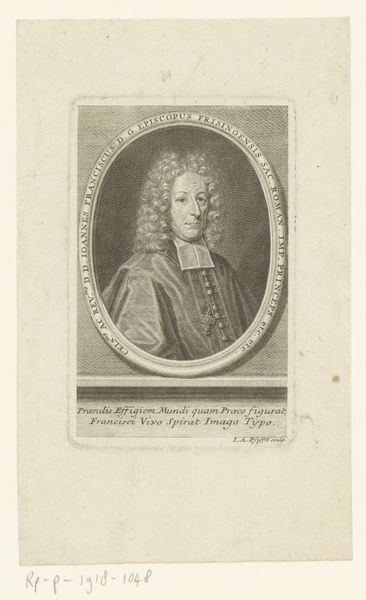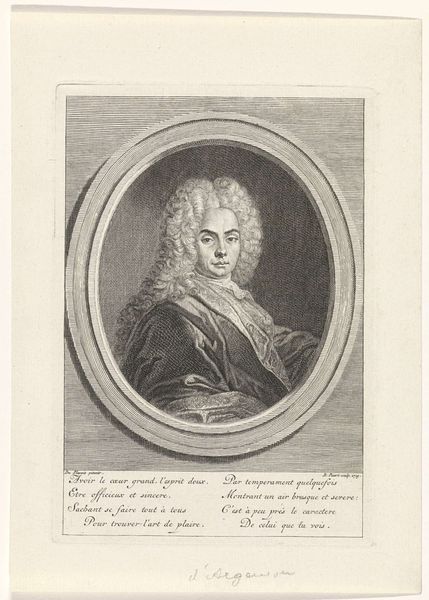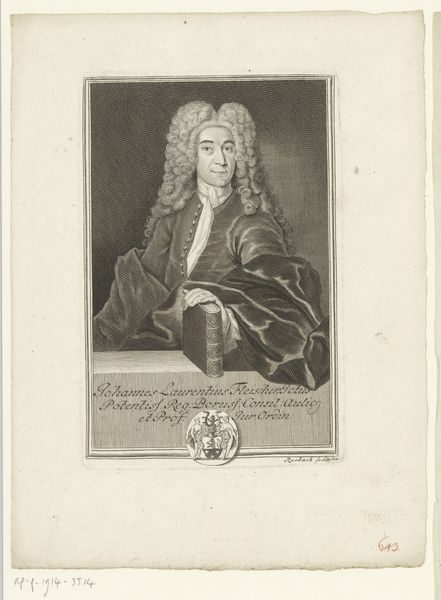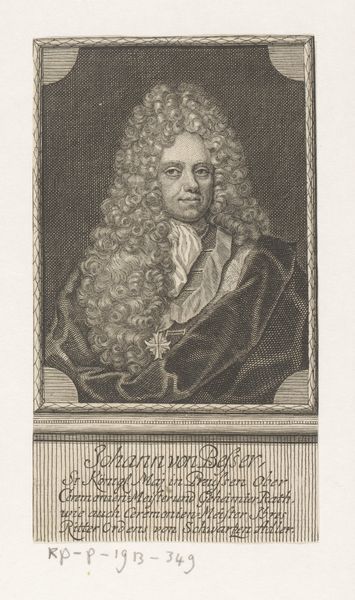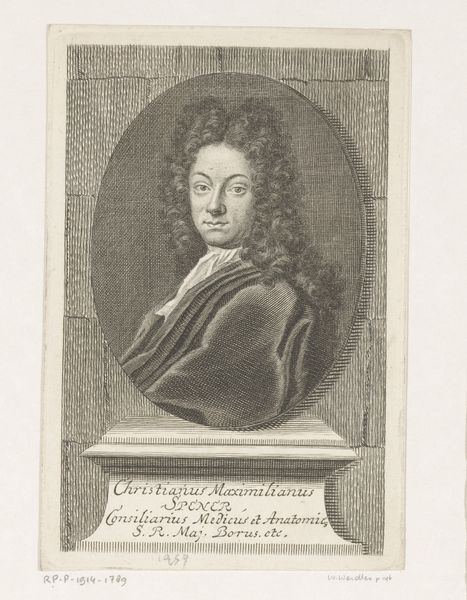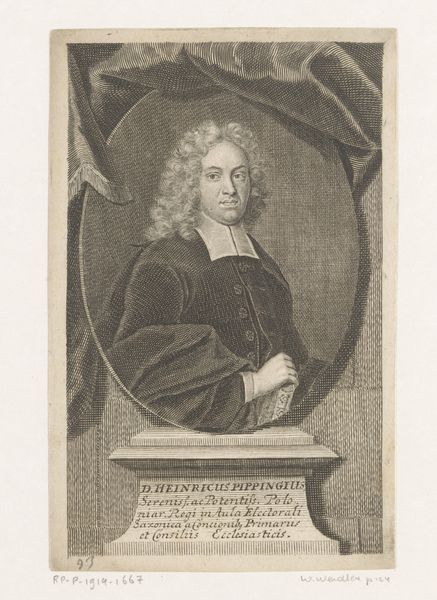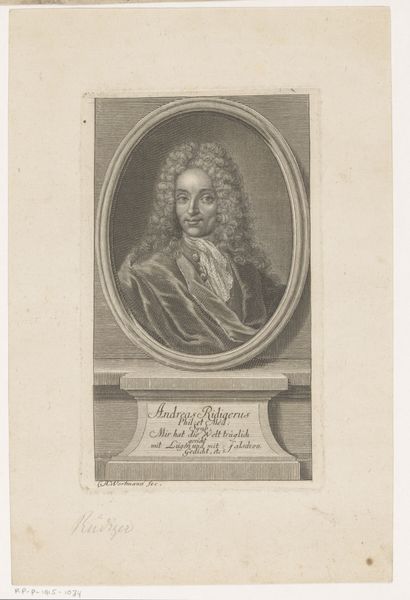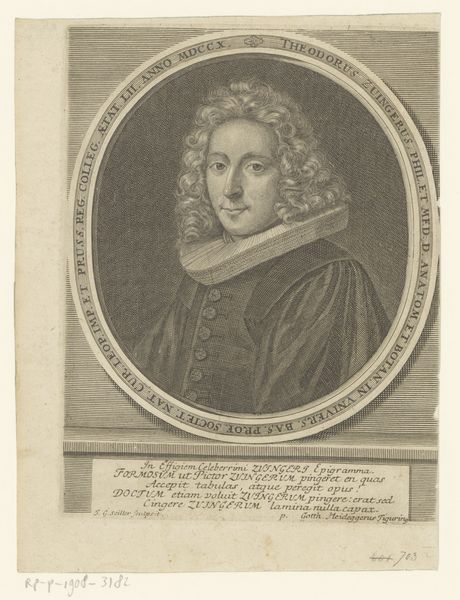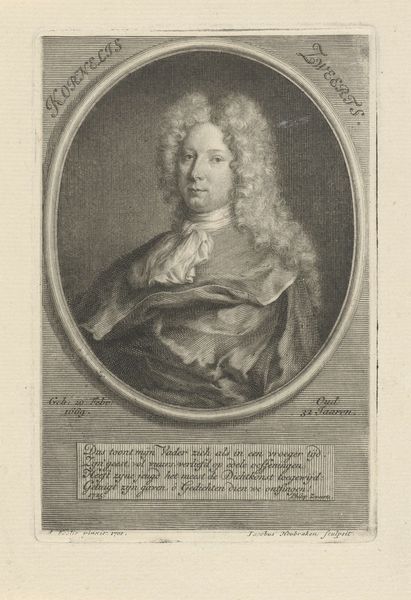
engraving
#
portrait
#
baroque
#
old engraving style
#
history-painting
#
engraving
Dimensions: height 150 mm, width 100 mm
Copyright: Rijks Museum: Open Domain
Editor: Here we have Johann Friedrich Rosbach’s engraving, "Portret van Gottlieb Samuel Treuer," created sometime between 1700 and 1749. The meticulous detail and the subject's ornate wig immediately strike me. How do you approach an artwork like this from a formalist perspective? Curator: I would begin with its construction. Notice how the artist employs linear hatching to create tonal variations, meticulously building up the form. Observe how the curvilinear lines of the wig contrast with the straight, sharp lines of the architecture. The work's dynamic is achieved precisely through the interplay between these elements. Editor: So, you’re focusing on the internal elements and relationships rather than the external context. How does that approach reveal something about this specific engraving? Curator: It illuminates how the artist, Rosbach, controls the viewer's gaze through strategic contrasts and compositional balance. The rigid rectangular frame creates closure. The portrait follows traditional construction, yet notice that he turns his head, adding subtle movement and revealing light, all within a stable, enclosed architecture. Does the tension communicate anything? Editor: Interesting. I was initially drawn to its historical context, but your analysis really highlights the intentional artistic choices. I see that he is trapped within an enclosed architectural form. Curator: And that limited area is the foundation for both the portrait and an introspective assessment. Do you see it that way now? Editor: Absolutely, thinking about line and form is more revealing than I initially thought. Curator: Indeed, by analyzing these intrinsic formal properties, we gain a deeper understanding and enhance the viewers overall understanding of the aesthetic achievement.
Comments
No comments
Be the first to comment and join the conversation on the ultimate creative platform.
